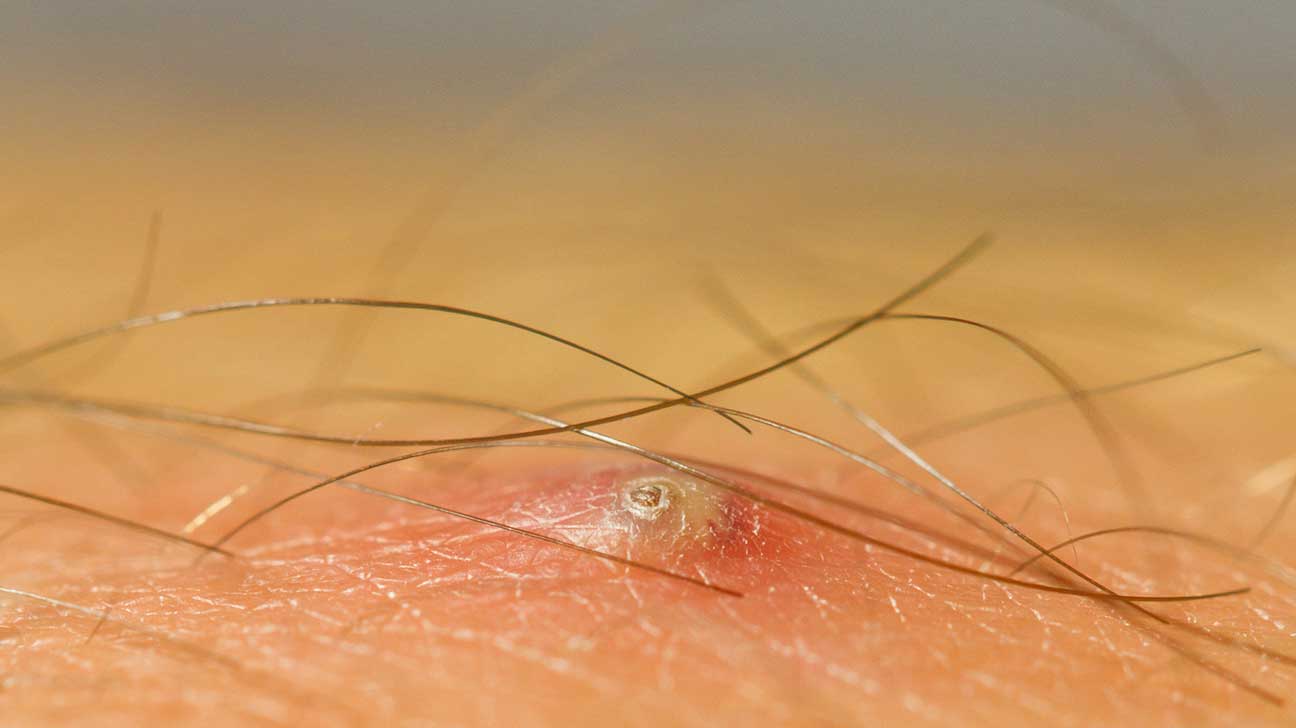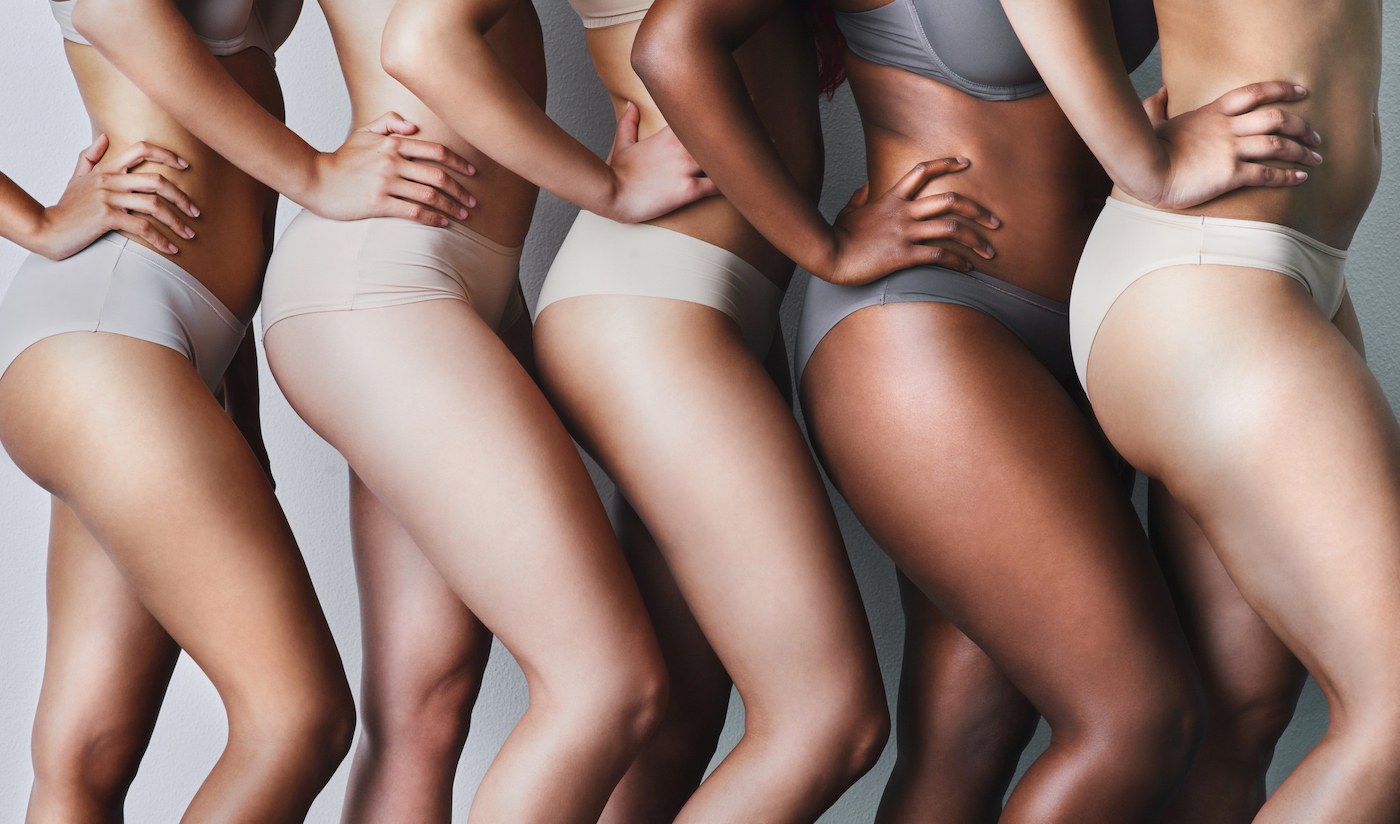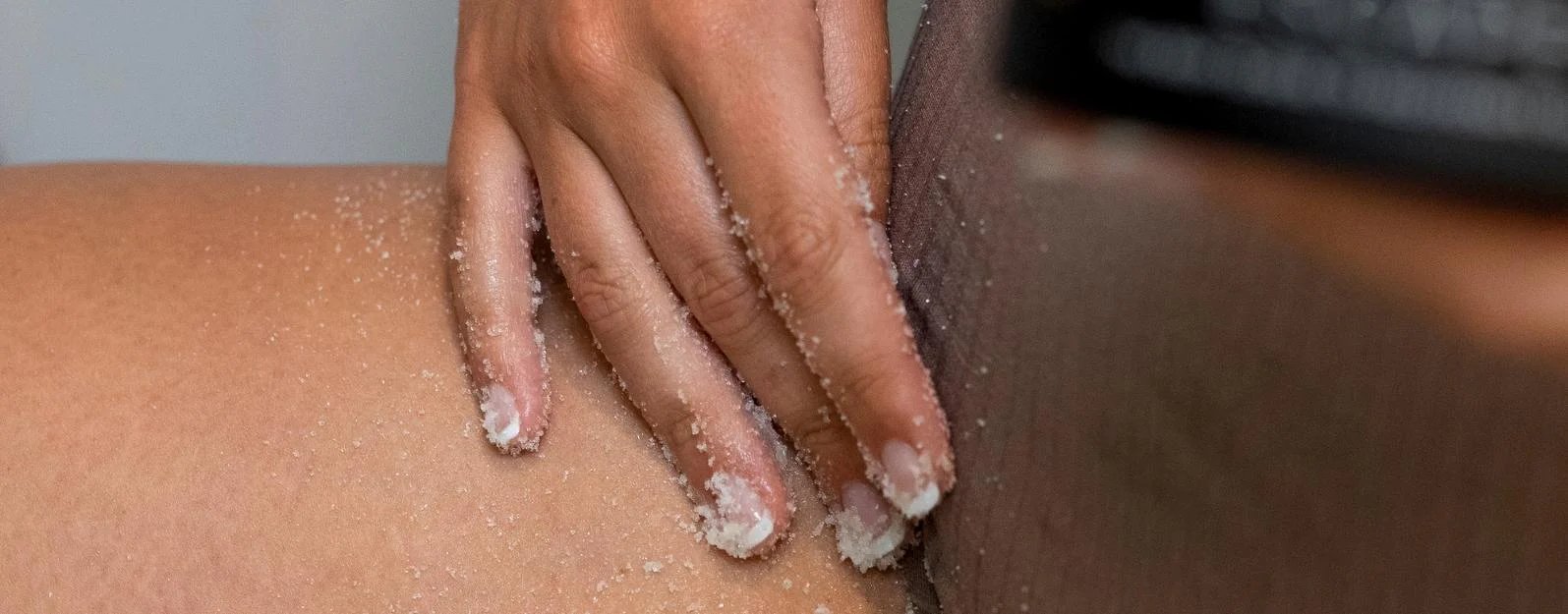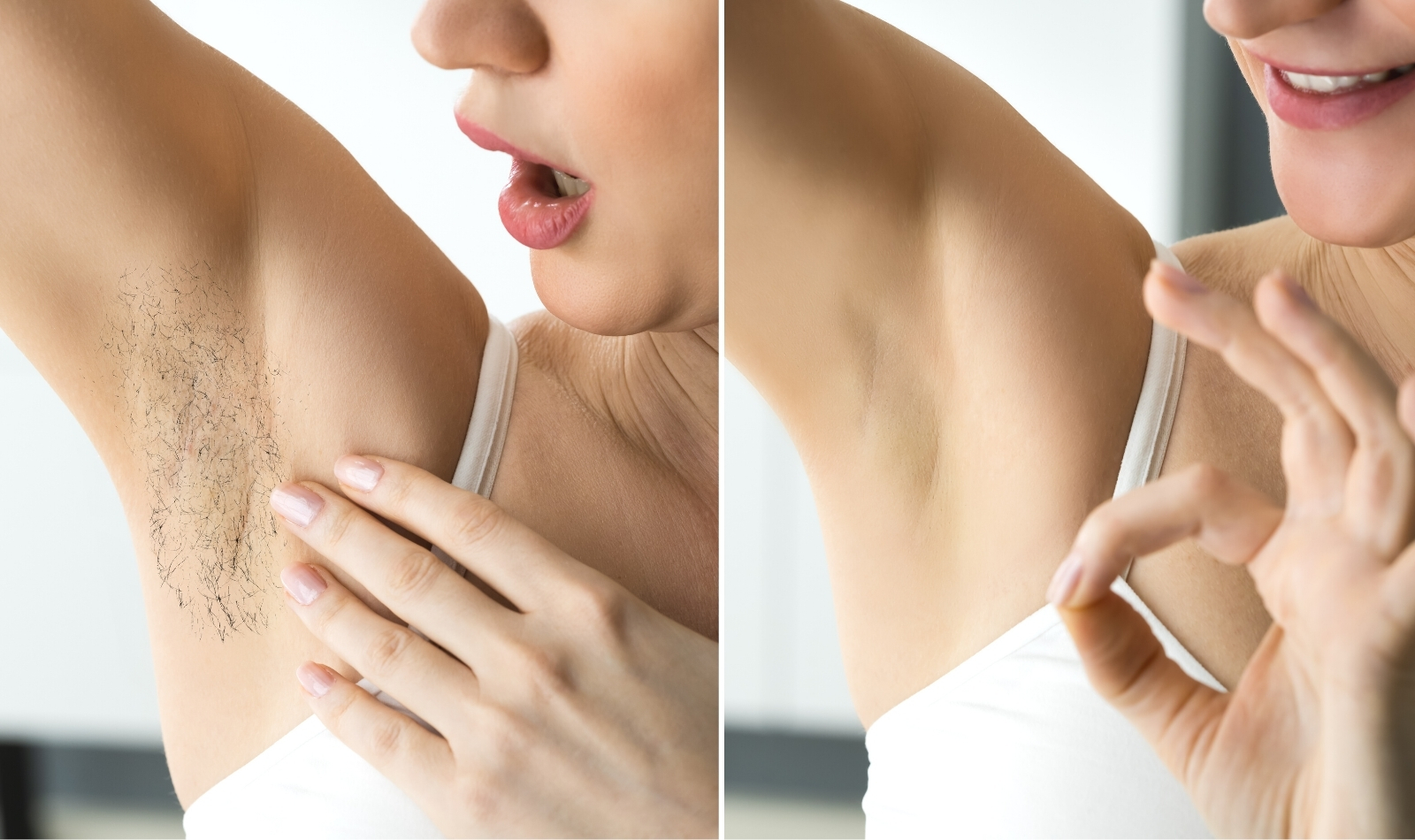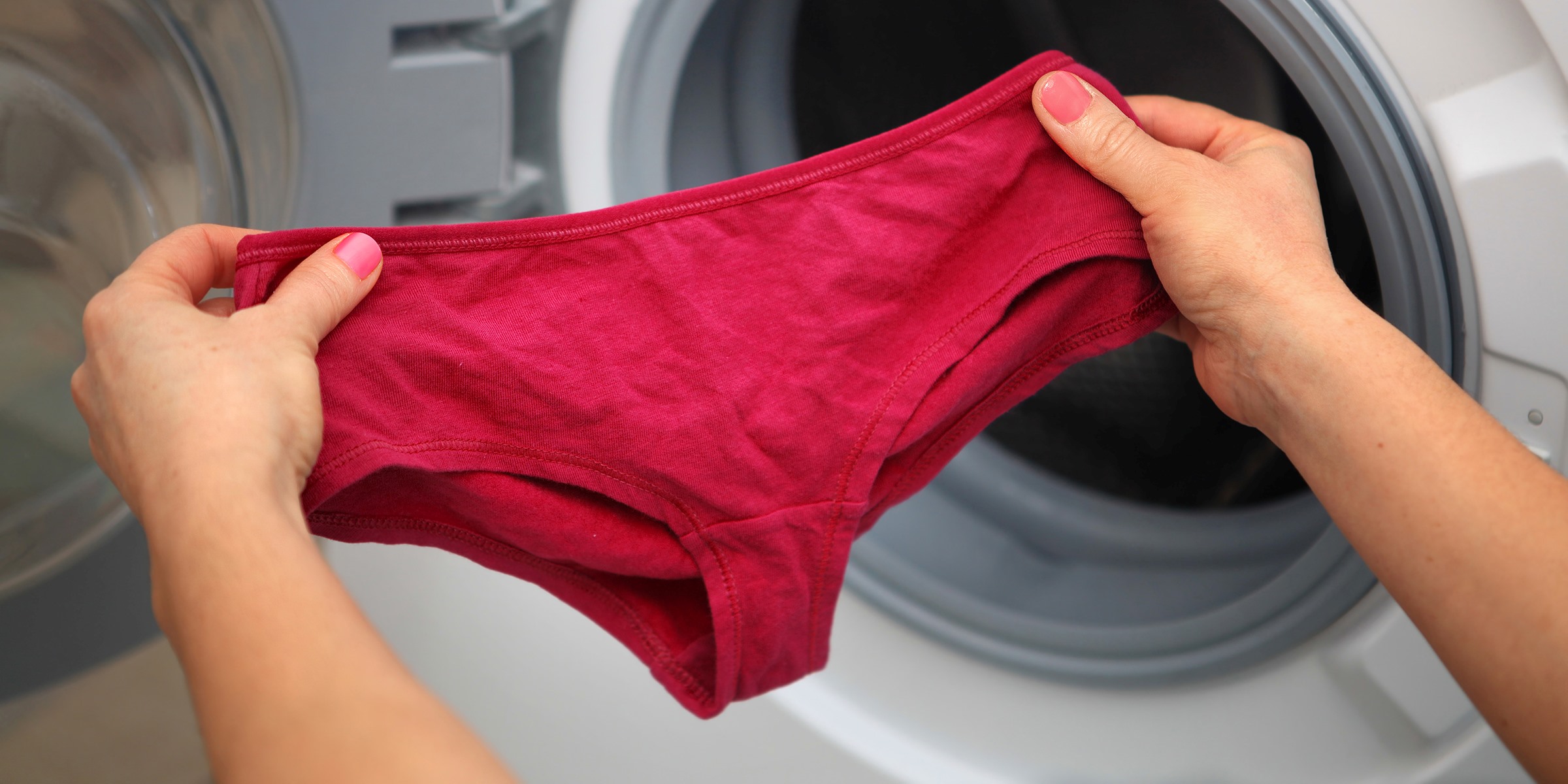Home>How-to Guides>For All>How To Stop Underwear Chafing


For All
How To Stop Underwear Chafing
Modified: September 29, 2023
Learn effective ways on how to stop underwear chafing for all. Prevent discomfort and irritation with these helpful tips and techniques.
(Many of the links in this article redirect to a specific reviewed product. Your purchase of these products through affiliate links helps to generate commission for Under-tec.com, at no extra cost. Learn more)
Table of Contents
- How To Stop Underwear Chafing
- Introduction
- Understanding Underwear Chafing
- Causes of Underwear Chafing
- Common Areas Affected by Underwear Chafing
- Prevention Tips for Underwear Chafing
- Choosing the Right Underwear to Prevent Chafing
- Proper Hygiene and Moisture Management
- Lubrication and Anti-Chafing Products
- Treating Underwear Chafing
- When to Seek Medical Help
- Conclusion
How To Stop Underwear Chafing
Underwear chafing can be a uncomfortable and irritating problem. It occurs when the constant rubbing of the fabric against the skin causes friction, leading to redness, soreness, and sometimes even blisters. However, there are several measures you can take to prevent and alleviate this issue. By following these tips, you can say goodbye to the discomfort of underwear chafing and enjoy a more comfortable wearing experience:
- Choose the right underwear: Opt for underwear made from moisture-wicking and breathable fabrics such as cotton or moisture-wicking synthetic materials. Look for styles that have smooth seams and a tag-free design to reduce friction.
- Size matters: Wearing underwear that is too tight can increase the risk of chafing. Make sure to choose underwear that fits comfortably and provides enough room for movement.
- Stay dry: Moisture can exacerbate chafing, so it’s important to keep the area dry. After showering or sweating, make sure to thoroughly dry yourself before putting on fresh underwear.
- Use lubrication: Applying a thin layer of petroleum jelly, anti-chafing balm, or baby powder to areas prone to chafing can help reduce friction and prevent irritation.
- Avoid harsh detergents: Wash your underwear with mild, fragrance-free detergent to prevent any skin sensitivity or irritation that can contribute to chafing.
- Consider anti-chafing bands: If you experience chafing in specific areas such as the inner thighs, wearing anti-chafing bands or shorts under your underwear can provide an extra layer of protection.
- Change underwear frequently: Sweating and excess moisture can contribute to chafing, so it’s essential to change into clean, dry underwear regularly throughout the day. Storing your underwear properly in one space can help you find them easily for routine changes.
- Seek medical help if needed: If your chafing doesn’t improve or if you notice signs of infection such as increased redness, swelling, or pus, it’s important to consult a healthcare professional for proper diagnosis and treatment.
By following these preventative measures and taking care of your skin, you can effectively combat underwear chafing and enjoy a more comfortable day-to-day experience. Remember, prevention is key, so choose your underwear wisely and take the necessary steps to keep your skin dry and irritation-free.
Introduction
Underwear chafing is a common problem that can cause significant discomfort and irritation. Whether you’re an athlete, someone with an active lifestyle, or simply wearing underwear for daily activities, chafing can affect anyone. The constant friction between the fabric and your skin can lead to redness, soreness, and even painful blisters. However, there are steps you can take to prevent and alleviate the issue of underwear chafing.
In this article, we will discuss the causes of underwear chafing, the common areas affected, and provide you with useful tips on how to prevent and treat this problem. By following these guidelines, you can find relief from the discomfort of underwear chafing and enjoy a more enjoyable wearing experience.
We will explore the importance of choosing the right underwear made from breathable and moisture-wicking materials. We will also discuss the significance of proper hygiene and moisture management to reduce the risk of chafing. Additionally, we’ll delve into the importance of lubrication and anti-chafing products to create a protective barrier against friction. Moreover, we will provide guidance on how to treat underwear chafing if it does occur.
It’s important to note that while these tips can help alleviate and prevent mild cases of chafing, severe or persistent chafing may require medical attention. If you experience severe pain, swelling, or signs of infection, it’s crucial to consult a healthcare professional for proper diagnosis and treatment.
Let’s dive into the details of how you can stop underwear chafing and enjoy more comfortable and pain-free days.
Understanding Underwear Chafing
Underwear chafing occurs when there is repetitive friction between the fabric of your underwear and your skin. This friction can cause irritation, redness, and soreness in the affected areas. Understanding the underlying causes of underwear chafing can help you take proactive steps to prevent it.
One of the main causes of chafing is the use of underwear that doesn’t fit properly. Underwear that is too tight can dig into the skin and create excessive friction, leading to chafing. On the other hand, underwear that is too loose may move around and cause rubbing against the skin. It’s essential to choose underwear that fits comfortably, provides enough room for movement, and doesn’t ride up or dig into the skin.
The type of material used in your underwear also plays a significant role in preventing chafing. Fabrics such as cotton or moisture-wicking synthetic materials are ideal choices as they help draw moisture away from the skin, reducing the risk of friction and irritation. Avoid underwear made from rough or abrasive materials that can exacerbate chafing.
Another contributing factor to underwear chafing is excessive moisture. Sweat, humidity, and inadequate moisture management can create a moist environment that increases friction and irritation. It’s crucial to keep the affected areas dry and well-ventilated to reduce the risk of chafing. Changing into clean, dry underwear regularly throughout the day can help manage moisture and prevent chafing.
Additionally, certain areas of the body are more prone to chafing than others. The inner thighs, groin, and buttocks are common areas where chafing occurs due to the friction caused by movement and sweat buildup. Understanding these high-risk areas can help you be more proactive in preventing chafing by taking preventative measures such as using lubrication or wearing anti-chafing bands or shorts.
By understanding the causes and risk factors of underwear chafing, you can make informed choices to prevent it. The next section will provide you with valuable tips on how to prevent and manage underwear chafing, allowing you to enjoy a more comfortable and irritation-free wearing experience.
Causes of Underwear Chafing
Underwear chafing can be caused by several factors, all of which contribute to the friction and irritation experienced in certain areas of the body. Understanding the causes of underwear chafing is essential in order to effectively prevent and manage this uncomfortable issue.
Poorly fitting underwear is one of the primary causes of chafing. Underwear that is too tight can dig into the skin, creating friction and irritation. Conversely, underwear that is too loose may move around and rub against the skin, leading to chafing. It is important to choose underwear that fits properly and provides enough room for movement without being too constrictive.
The type of material used in the underwear can also contribute to chafing. Rough or abrasive fabrics can cause more friction against the skin, increasing the likelihood of chafing. Opting for underwear made from soft, breathable, and moisture-wicking fabrics like cotton or moisture-wicking synthetics can help reduce friction and provide a more comfortable wearing experience.
Excessive moisture and inadequate moisture management can exacerbate the problem of chafing. Sweat and humidity can create a moist environment, increasing friction and irritation. It is important to keep the affected areas dry and well-ventilated by changing into clean, dry underwear regularly and using moisture-wicking fabrics.
Movement also plays a significant role in underwear chafing. Areas of the body that experience repetitive rubbing, such as the inner thighs, groin, and buttocks, are more prone to chafing. Activities that involve friction-inducing movements, such as running or sports, can increase the risk of chafing. Understanding these high-risk areas and taking preventative measures, such as using lubrication or wearing anti-chafing bands, can help minimize the occurrence of chafing.
Overall, the causes of underwear chafing can be attributed to factors such as poor fit, unsuitable materials, excessive moisture, and repetitive movement. By recognizing these causes, you can take proactive steps to prevent and manage underwear chafing, ensuring a more comfortable and irritation-free experience.
Common Areas Affected by Underwear Chafing
Underwear chafing can occur in various areas of the body, and understanding these common areas will help you take targeted measures to prevent and address the issue. The friction caused by the constant rubbing of underwear against the skin can lead to irritation, redness, and discomfort in these specific regions.
One of the most common areas affected by underwear chafing is the inner thighs. The repetitive motion and moisture buildup in this area can result in friction and skin irritation. The friction can be especially prominent during activities that involve leg movement, such as walking, running, or cycling. To prevent chafing in the inner thigh area, it is advisable to choose underwear that fits well and has a smooth fabric that reduces friction. Wearing anti-chafing bands or shorts can also provide an extra layer of protection in this sensitive area.
The groin area is another location prone to chafing. This area is susceptible to moisture accumulation, especially during hot and humid conditions. The combination of sweat and inadequate ventilation can increase friction and irritation. Choosing underwear made from moisture-wicking and breathable materials can help manage moisture and reduce chafing in the groin area. Additionally, maintaining proper hygiene and keeping the area clean and dry can also minimize the risk of chafing.
The buttocks are often subjected to chafing due to their construction and the potential for moisture buildup. Sitting for extended periods or engaging in activities that involve repetitive motion can contribute to friction and irritation in this area. Opting for underwear with a seamless design and moisture-wicking properties can help minimize chafing on the buttocks. Additionally, keeping the area clean and dry, and using lubrication or anti-chafing products, can provide relief and prevent further irritation.
It is worth noting that while the inner thighs, groin, and buttocks are the most common areas affected by underwear chafing, chafing can potentially occur in other areas of the body as well. Individuals who perform intense physical activities or wear certain types of clothing may experience chafing on areas such as the waistline, nipples, or underarms. Being aware of these possibilities and taking preventive measures, such as applying lubrication or opting for specialized clothing, can help mitigate chafing in these areas.
Understanding the common areas affected by underwear chafing allows you to take targeted steps in preventing and managing this issue. By addressing these specific areas with appropriate prevention measures, you can reduce friction, alleviate discomfort, and enjoy a more comfortable wearing experience.
Prevention Tips for Underwear Chafing
Preventing underwear chafing is essential for maintaining comfort and avoiding the pain and irritation associated with this issue. By implementing these helpful prevention tips, you can significantly reduce the risk of chafing and enjoy a more pleasant wearing experience:
- Choose the right underwear: Opt for underwear made from moisture-wicking and breathable fabrics such as cotton or moisture-wicking synthetics. Look for styles that have smooth seams and a tag-free design to reduce friction.
- Size matters: Wearing underwear that is too tight can increase the risk of chafing. Make sure to choose underwear that fits comfortably and provides enough room for movement.
- Stay dry: Moisture can exacerbate chafing, so it’s important to keep the area dry. After showering or sweating, make sure to thoroughly dry yourself before putting on fresh underwear.
- Use lubrication: Applying a thin layer of petroleum jelly, anti-chafing balm, or baby powder to areas prone to chafing can help reduce friction and prevent irritation.
- Avoid harsh detergents: Wash your underwear with mild, fragrance-free detergent to prevent any skin sensitivity or irritation that can contribute to chafing.
- Consider anti-chafing bands: If you experience chafing in specific areas such as the inner thighs, wearing anti-chafing bands or shorts under your underwear can provide an extra layer of protection.
- Change underwear frequently: Sweating and excess moisture can contribute to chafing, so it’s essential to change into clean, dry underwear regularly throughout the day.
By following these prevention tips, you can greatly reduce the occurrence of underwear chafing. It’s important to find what works best for you and adjust your routine accordingly. Remember that prevention is key when it comes to avoiding the discomfort of chafing.
If, despite your efforts, you still experience chafing, don’t worry. The next section will provide guidance on choosing the right underwear to prevent chafing and how to properly manage hygiene and moisture to minimize the risk of chafing.
Choosing the Right Underwear to Prevent Chafing
Choosing the appropriate underwear is crucial in preventing chafing and ensuring a comfortable wearing experience. Here are some tips to help you select the right underwear:
- Opt for moisture-wicking fabrics: Choosing underwear made from moisture-wicking materials is essential in preventing chafing. Fabrics such as cotton or moisture-wicking synthetic blends help draw moisture away from the skin, reducing the risk of friction and irritation.
- Consider seamless designs: Look for underwear with seamless designs. Smooth seams can minimize rubbing and friction against the skin, reducing the likelihood of chafing. Additionally, underwear with flat or covered elastic waistbands helps to prevent unnecessary irritation.
- Choose the proper size: Wearing underwear that fits well is crucial in preventing chafing. Avoid underwear that is too tight, as this can dig into the skin and increase friction. On the other hand, underwear that is too loose may move around and cause rubbing against the skin. Find underwear that provides a comfortable fit and allows for freedom of movement.
- Opt for breathable materials: Look for underwear made from breathable materials that allow for adequate airflow. Proper ventilation helps to keep the skin dry and reduce moisture buildup, preventing chafing. Breathable underwear can also help regulate body temperature, keeping you comfortable throughout the day.
- Consider specialized options: If you are prone to chafing in specific areas, such as the inner thighs, consider wearing longer-legged boxer briefs or underwear with longer leg openings. These styles provide more coverage and reduce friction in high-risk areas.
It’s important to remember that everyone’s body and preferences are different, so it may require some trial and error to find the right underwear for you. Test out different styles, materials, and brands to determine which ones provide the best comfort and prevent chafing for your specific needs.
In combination with the tips mentioned in the previous section, choosing the right underwear can significantly reduce the risk of chafing. Next, we will explore the importance of proper hygiene and moisture management in preventing chafing and maintaining skin health.
Proper Hygiene and Moisture Management
Proper hygiene and moisture management play a crucial role in preventing underwear chafing and maintaining skin health. By following these guidelines, you can minimize the risk of friction, irritation, and discomfort:
- Keep the area clean: Maintaining proper hygiene is essential in preventing chafing. Make sure to clean the affected areas thoroughly during your daily shower or bath. Gently cleanse the area using mild, fragrance-free soap and pat dry with a clean towel.
- Avoid excessive moisture: Moisture can worsen chafing, so it’s important to keep the affected areas dry. After showering or sweating, make sure to thoroughly dry yourself before putting on fresh underwear. Pay specific attention to areas prone to chafing, such as the inner thighs and groin.
- Change underwear frequently: Sweating and excess moisture can contribute to chafing, so it’s essential to change into clean, dry underwear regularly. If you engage in activities that make you sweat excessively, consider changing your underwear more frequently to maintain dryness and prevent chafing.
- Absorbent powders: You can also use absorbent powders, such as talcum or cornstarch, in areas prone to chafing to help absorb excess moisture and keep the skin drier.
- Avoid irritants: Harsh detergents and fabric softeners can potentially irritate the skin, making it more susceptible to chafing. Wash your underwear with mild, fragrance-free detergent to avoid any potential skin sensitivity or irritation.
- Air the affected areas: Whenever possible, allow the affected areas to breathe and get some air. This can help reduce moisture buildup and promote faster healing of any existing irritation or chafing.
By practicing proper hygiene and moisture management, you can reduce the risk of underwear chafing and maintain healthier skin. Remember to be mindful of your daily routines and make adjustments as necessary to accommodate proper hygiene practices and maintain dryness in high-risk areas.
In the next section, we will discuss the use of lubrication and anti-chafing products as effective measures to prevent friction and alleviate underwear chafing discomfort.
Lubrication and Anti-Chafing Products
Lubrication and anti-chafing products can be highly effective in preventing friction and minimizing the discomfort of underwear chafing. These products create a protective barrier on the skin, reducing the likelihood of irritation and chafing. Here are some key points to consider:
- Choose the right lubrication: Applying a thin layer of lubrication to areas prone to chafing can help reduce friction and prevent irritation. Petroleum jelly, anti-chafing balms, and even baby powder can provide a protective barrier between the skin and the underwear, minimizing chafing.
- Apply the lubrication properly: Ensure that you apply the lubrication evenly and thoroughly to the areas at risk of chafing. Make sure to cover all the areas where the underwear may rub against the skin, such as the inner thighs, groin, and buttocks.
- Reapply as needed: Depending on factors such as activity level, temperature, and sweating, the lubrication may wear off over time. If you notice any discomfort or friction, reapply the lubrication as needed throughout the day to maintain its protective benefits.
- Consider anti-chafing products: There are various anti-chafing products available on the market, such as anti-chafing sticks, creams, and powders. These products are specifically designed to minimize friction and provide a protective layer against chafing. Experiment with different products to find the one that works best for you.
- Read and follow product instructions: Before using any lubrication or anti-chafing product, carefully read and follow the instructions provided by the manufacturer. This will ensure that you use the product correctly and obtain the best possible results.
Using lubrication and anti-chafing products can significantly reduce the risk of chafing and alleviate discomfort. These products create a protective barrier that reduces friction and allows for a smoother surface between the skin and underwear. Incorporating these products into your daily routine can help you enjoy a more comfortable wearing experience.
Next, we will discuss how to treat underwear chafing if it does occur, including home remedies and when to seek medical help.
Treating Underwear Chafing
If you are experiencing underwear chafing, there are several steps you can take to treat the irritation and promote healing. Here are some effective methods to alleviate the discomfort:
- Clean the affected area: Start by gently cleaning the chafed area with mild soap and lukewarm water. Pat the area dry with a clean towel, being careful not to further irritate the skin.
- Apply a soothing ointment or cream: Using a healing ointment or cream can help soothe the chafed skin and promote healing. Look for products containing ingredients such as aloe vera, vitamin E, or chamomile, which have soothing and anti-inflammatory properties.
- Avoid further friction: Minimize any additional friction or irritation to the affected area. Wear loose-fitting clothing made from soft, breathable fabrics that won’t rub against the chafed skin.
- Keep the area dry: Moisture can prolong healing time and potentially worsen chafing. Ensure the area is kept clean and dry throughout the healing process.
- Take a break from physical activity: If possible, allow the affected area to rest and heal by avoiding activities that may aggravate the chafing. This will give the skin time to recover and reduce the risk of further irritation.
- Utilize cold compresses: Applying a cold compress to the chafed area can help reduce inflammation and alleviate discomfort. Wrap a few ice cubes in a clean cloth and gently apply it to the affected area for short intervals.
- Consider over-the-counter pain relief: If you’re experiencing pain or discomfort, over-the-counter pain relievers like ibuprofen or acetaminophen can help provide temporary relief. Follow the directions on the packaging and consult a healthcare professional if necessary.
If the chafing does not improve or if you notice signs of infection such as increased redness, swelling, or the presence of pus, it’s important to seek medical help. A healthcare professional can assess the severity of the chafing and provide appropriate treatment, such as antibiotic creams or ointments, to prevent further complications.
Remember, treating underwear chafing promptly and properly can help alleviate discomfort and promote faster healing. However, prevention is always better than cure. Implementing the preventive measures discussed earlier can help minimize the risk of chafing and maintain skin health.
In the next section, we will discuss the circumstances under which it is essential to seek medical help for underwear chafing.
When to Seek Medical Help
In most cases, underwear chafing can be effectively managed and treated at home. However, there are situations when it is necessary to seek medical help. Here are some instances when it is advisable to consult a healthcare professional:
- Persistent symptoms: If the chafing symptoms persist or worsen despite home remedies and proper care, it is important to seek medical attention. This could indicate an underlying infection or a more severe case of chafing that requires professional treatment.
- Signs of infection: If you notice signs of infection such as increased redness, swelling, warmth, tenderness, or the presence of pus or discharge, it is crucial to consult a healthcare professional. Infections can occur when chafed skin becomes vulnerable to bacteria or fungi, and medical treatment may be necessary to prevent complications.
- Severe pain or discomfort: If you are experiencing severe pain or discomfort that is interfering with your daily activities, it is recommended to seek medical help. Severe chafing may require medical intervention and additional pain management techniques.
- Spreading or worsening rash: If the chafing rash is spreading to other areas of the body or getting worse despite treatment, it is important to have it evaluated by a healthcare professional. This could indicate an allergic reaction or an underlying condition that requires medical attention.
- Underlying medical conditions: If you have pre-existing medical conditions such as diabetes or compromised immune system, it is important to consult a healthcare professional. These conditions can increase the risk of complications associated with chafing and may require specialized care.
Remember, healthcare professionals are trained to diagnose and treat various skin conditions, including severe cases of chafing. Seeking medical help when necessary can ensure appropriate treatment and help prevent potential complications.
By following the preventive measures discussed earlier and seeking medical assistance in the appropriate situations, you can effectively manage and treat underwear chafing, promoting faster healing and a more comfortable experience.
Conclusion
Underwear chafing can be a bothersome and uncomfortable issue, but with the right knowledge and preventive measures, you can effectively manage and prevent it. By choosing the right underwear made from breathable and moisture-wicking materials, ensuring proper hygiene and moisture management, and using lubrication and anti-chafing products, you can significantly reduce the risk of chafing.
It’s essential to listen to your body and make adjustments as needed. If you do experience chafing, take prompt action by cleaning the affected area, applying soothing creams or ointments, and taking breaks from activities that may aggravate the chafing. In more severe cases, seeking medical help is advised, especially if the symptoms persist, there are signs of infection, or if you have underlying medical conditions.
Remember, prevention is key. Taking proactive measures to prevent underwear chafing, such as choosing the right underwear, practicing proper hygiene and moisture management, and using lubrication, can make a significant difference in your comfort and overall well-being.
By implementing these tips and techniques, you can say goodbye to the discomfort of underwear chafing and enjoy a more comfortable and irritation-free wearing experience.

